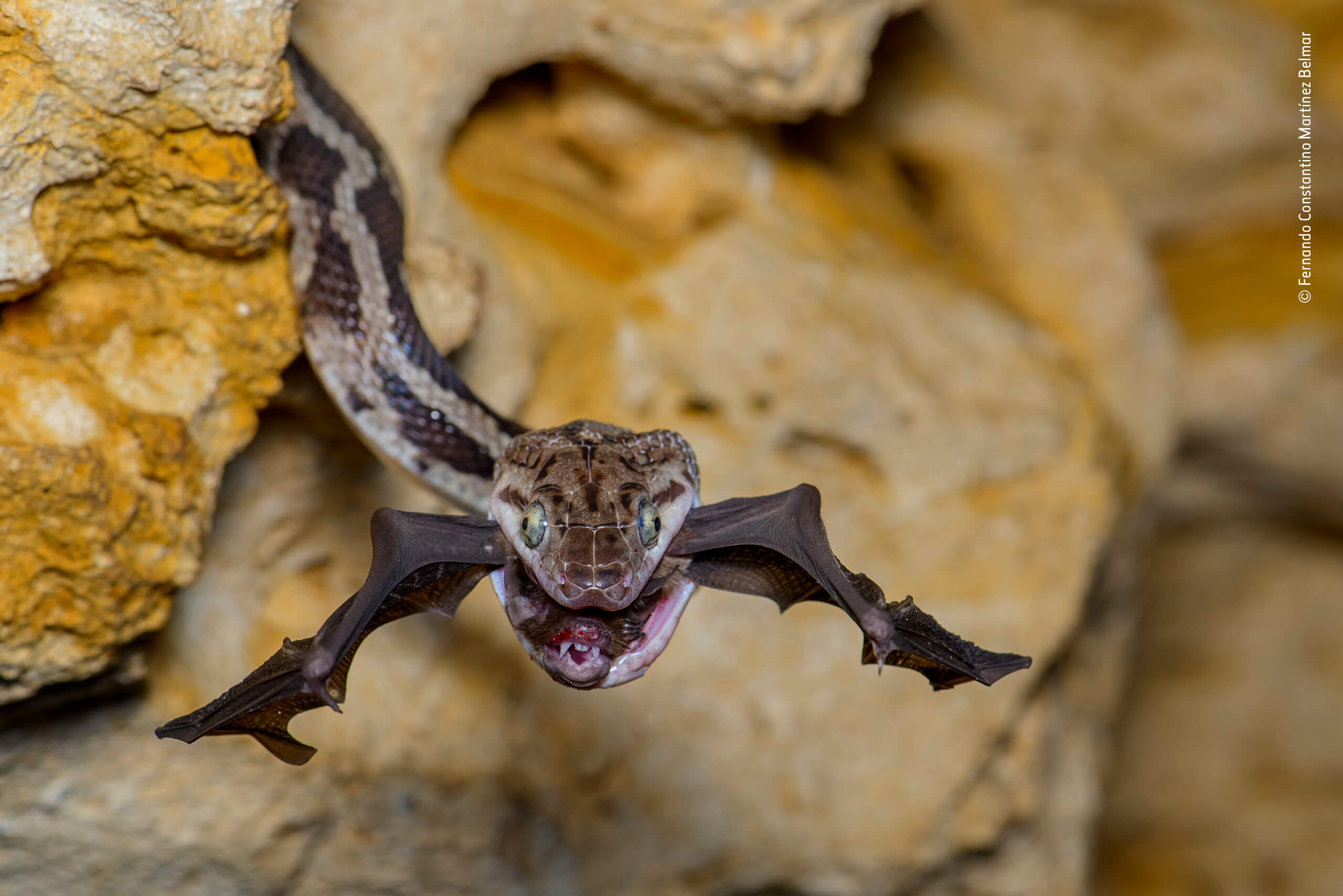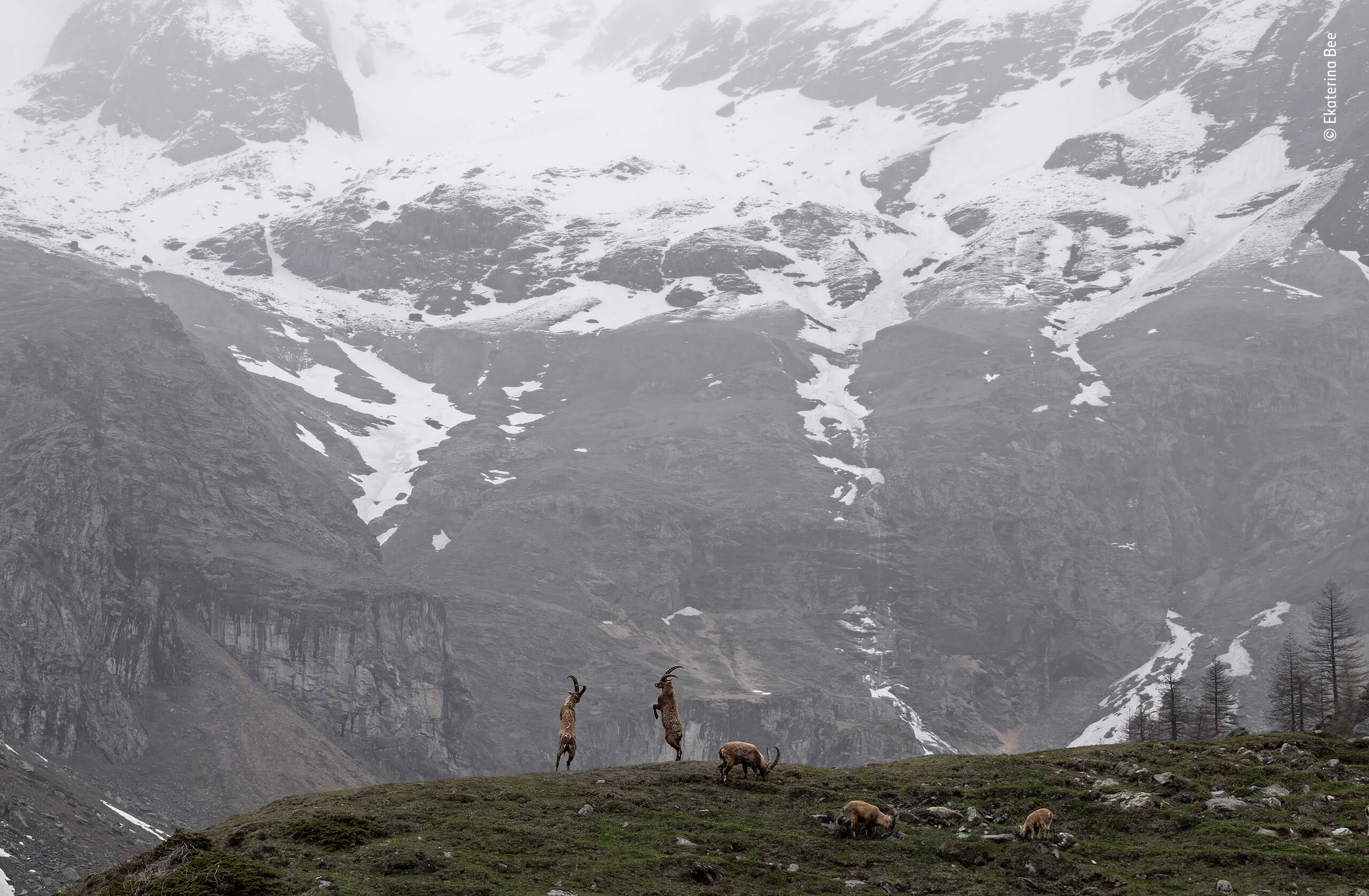Wild Photo Art at the Natural History Museum
Review of the exhibition Wildlife Photographer of the Year 2022

"Pyramid of life" by Laurent Ballesta, France © Winner in the category 'Portfolio Award'
✮✮✮✮✮✮
' ……….. an exhibition that appeals to everyone ……..'
– Master of Science, Bo Christiansen, KULTURINFORMATION
At the Danish Natural History Museum there is now an exhibition of an impressive collection of nature photos until August 27th 2023. The photos originate from an international annual competition, where the 100 best nature photos are selected and awarded, both because of their artistic and technical qualities, and also because they provide an honest and authentic interpretation of nature.
The exhibition Wildlife Photographer of the Year has been developed and produced by the Natural History Museum of London (since 1965), and the Danish Natural History Museum has secured the rights to show the exhibition in this country. The exhibition is sponsored by a number of foundations whose purpose is to promote, among other things, culture, science and education. It is not the first and hopefully not the last time this exhibition comes to Denmark. Kulturinformation has previously reviewed the exhibition which was shown in 2021.
On the museum's website, the exhibition is presented with these words:
"With seriousness, astonishment and humor, the world's most talented photographers depict the beauty and fragility of nature and share their fascinating stories about the creation of the images. The many beautiful photos show the diversity of life on Earth, and they inspire us to reflect on man's place in nature and our responsibility to protect it.”
Categories
The images are divided into a number of categories, for example animal portraits, behaviour, artwork in the nature, photo-journalism, animals in their natural environment, and the city's wildlife. There are also a few categories for very young photographers.
Although these are razor-sharp snapshots, some of them taken in thousandths of a second, they are much more than just a moment. Each picture actually tells several stories.

"The bat-snatcher" by Fernando Constantino Martínez Belmar, Mexico © Winner in the category 'Behaviour: Amphibians and Reptiles'
First, of course, there is the moment the photographer captured. Some of the images depict a state, others contain lots of action. Each image is assigned a short, often poetic, title as well as a brief description.
Next, we get the photographer's brief description of the creation of the image, the hardships involved in capturing the image, the patience or resourcefulness, and the ingenuity that was mobilized.
Each image is put into a larger perspective, be it climate change, industrial development, people's greed or love for nature and life, and thus we are invited to reflect on man's place in nature and our responsibility to protect it.
We also get the technical details, what equipment and settings were used to capture the image. Many of the images are accompanied by a link to the photographer and his/her other works as well as a profile on social media.
An example
Let's take an example: Dmitry Kokh's image titled 'Polar Frame' in the category Animal Portraits. Here, the Russian photographer shares a wonderful encounter with polar bears that have taken over an abandoned settlement.
https://www.nhm.ac.uk/wpy/gallery/2022-polar-frame?tags=ed.current

"House of bears" by Dmitry Kokh, Russia © Winner in the category 'Urban Wildlife'
The short accompanying text describes how, from his boat, near the coast of the small uninhabited island of Kolyuchin, equipped with binoculars, the photographer navigates a quiet drone close to a group of more than 20 polar bears exploring the ghost town and the abandoned weather station.
The perspectival text tells about the depopulation of small remote Arctic settlements after the dissolution of the Soviet Union in the early 1990s, and about how climate change is reducing the sea ice and thus pushing the curious polar bears to seek new hunting grounds.
Then follows a short presentation of the photographer and his work in creating memorable and beautiful images, that can hopefully inspire people to care about and preserve nature. His work approach is described as 'borne out of his enthusiasm and energy – full immersion, staying innovative and focusing on storytelling'. You are of course referred to the photographer's website, where you can see more examples of his work.
About the image itself, we are told that the camera is a DJI Mavic 2 Pro Hasselblad L1D-20c, and that the image was taken at 1/320 sec. at f3.2 • ISO 100.
Encouraging stories
For each individual image, it is possible to immerse oneself in such short, embedded stories. There are both sad and encouraging stories. Photo-journalistic reports on the work of individuals or organizations to save endangered species. Portraits of animals in their natural environment or animals trying to adapt to an almost destroyed environment. And behind most images the story of enthusiastic photographers' efforts to share a beautiful and intense experience with the whole world. Even the most beautiful and original pictures somehow remind us of how rare untouched beauty is.

"Battle stations" by Ekaterina Bee, Italy © Winner in the category 'Young Photographers: 10 Years and Under'
Something else that makes an impression at this exhibition is the audience's enthusiasm. Some are there alone, they stand for a long time at the individual images and are clearly immersed in thought. But many are there with a companion and share the experience, show each other what they have found or what makes a special impression. Some have children or grandchildren with them. It really is an exhibition that appeals to everyone, and I can only recommend that you experience it together with someone.
Natural History Museum: Wild Photo Art, Fact box:
There is much more information on the exhibition's website.
https://snm.ku.dk/udstillinger/wildlife-photographer-of-the-year/
At the Natural History Museum, London's website, all the pictures and texts are found. Also the pictures from the last 10-12 years' exhibitions. It is possible to search on all parameters: biotopes, topics, geography, animal species and much more. https://www.nhm.ac.uk/wpy/gallery
Natural History Museum: Wild Photo Art is written by Master of Science, Bo Christiansen, KULTURINFORMATION

